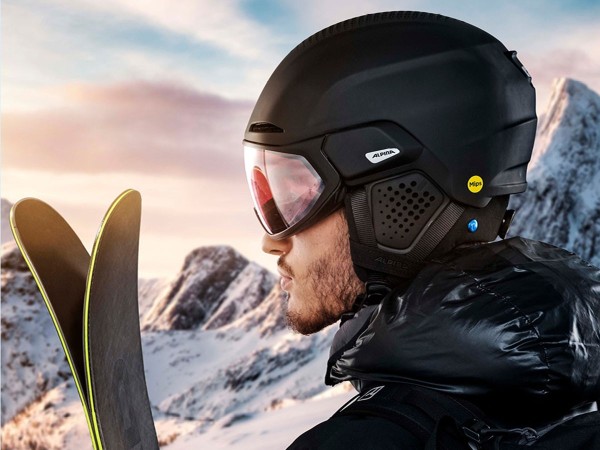A ski helmet must fit perfectly
A helmet that wobbles or feels tight can ruin your day on the slopes. When you’re in position, adjusting your ski helmet can increase the risk of falling, and pressure points can cause headaches. Alpina takes all these factors into account with a sophisticated base fit.
Comfort when wearing a ski helmet
In practice: Imagine perfect weather on the slopes. The sun is shining, and you’re covering plenty of kilometers. It’s normal to break a sweat, and the helmet’s comfort may decrease significantly due to the warmth. Some people might even experience itching on their heads. Alpina has devised an ingenious ventilation system called the One-Touch Ventilation. Additionally, the Air-Stream Control System provides noticeable improvements. With a simple adjustment, you can open or close a ventilation slider. This allows you to regulate airflow based on weather conditions. The system ensures that air flows freely through the helmet, minimizing heat buildup without compromising cold protection during chilly weather. An enjoyable climate inside the helmet is always guaranteed. You can find this system, for example, in Alpina Brix ski helmets, available in various colors. Furthermore, the helmet is designed with seamless fit, so it fits perfectly with your ski goggles.
Safety first - MIPS
The primary purpose of a ski helmet is to provide comprehensive head protection. Optimal base fit is crucial for the best protection. Additionally, the MIPS system offers even more safety. It protects the head and brain from rotational forces during angled impacts by distributing the forces across the entire surface. The MIPS system is incorporated in Alpina Kroon models and the Alpina Oro QV MIPS, the latter being a visor helmet.
Visor helmets on the slopes
Visor helmets are on trend. Comfort, ventilation, and the ability to wear glasses underneath are arguments in favor of a visor helmet. The Oro QV Mips is equipped with the Translations-Rotations-Mechanism, which ensures that the visor fits particularly snugly against the face. It might sound complicated, but Alpina has made it user-friendly. When wearing the helmet, you can simply flip up or down the integrated ‘ski goggles,’ similar to what motorcyclists have been doing for a long time. However, it’s not a simple plastic shield; it’s a visor that offers everything that modern sports and ski goggles provide.
Contrast-enhancing Quattroflex lens
For over 40 years, Alpina has been focused on optimal visibility on the slopes. The Quattroflex lens eliminates reflections using a polarization filter, making icy surfaces much more visible. The lens also eliminates annoying glare and infrared radiation while enhancing contours. Thanks to bromine crystals in the lens, the tint automatically adjusts to different lighting conditions
Who benefits from visor helmets?
Visor helmets are particularly beneficial for various skier let’s delve into the specifics. These helmets, equipped with Quattroflex lenses, are especially well-suited for eyeglass wearers. While some may argue that this feature existed in previous models, the designers have meticulously addressed minor inconveniences.
Consider the scenario familiar to car drivers: reflections from the dashboard on the windshield can be bothersome, especially in bright sunlight. Interestingly, this issue arises with visor helmets as well. The edge of the helmet’s visor can cause reflections on the inner side of the lens. To tackle this, Alpina engineers have experimented with tinted visors. By minimizing disruptions to the field of vision, they enhance safety for all wearers




